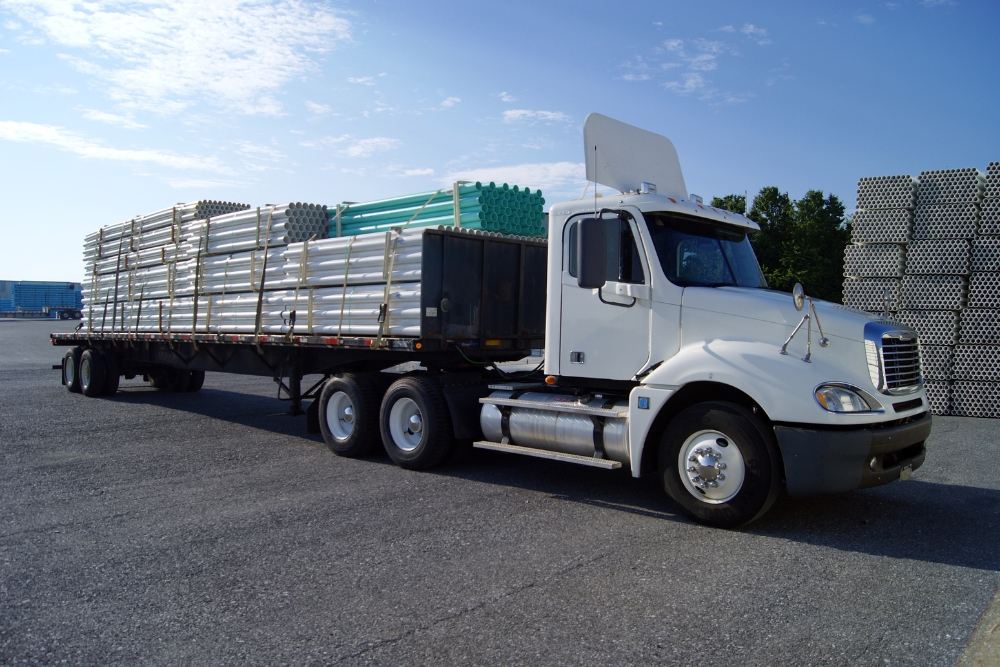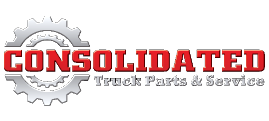Your truck’s suspension system is the unsung hero of every mile you travel. It’s what keeps your wheels planted, your ride smooth, and your cargo secure. Yet, it’s often overlooked until there’s a major problem, and by then, it could already be costing you time, money, and safety.
In this guide, we’re not just listing symptoms. We’ll break down why suspension issues matter, how to recognize them early, and what steps you can take to avoid costly downtime. Whether you’re an owner-operator or a fleet manager, understanding your truck’s suspension could mean the difference between a small fix and a major overhaul.
Let’s take a deeper look at the top five signs your truck needs immediate suspension repair, and what to do next.

The Role of Suspension in Heavy-Duty Trucks
Before we get into the signs, it’s worth understanding what your suspension system does. Most truck drivers think of it as something that just “smooths out the ride,” but it’s far more than that.
A truck’s suspension system is designed to:
- Keep your tires in contact with the road at all times
- Distribute the weight of your load evenly
- Absorb shock from bumps, potholes, and uneven terrain
- Maintain proper wheel alignment
- Improve handling and braking response
In short, your suspension system is critical for safety, comfort, and load management. When something goes wrong, it impacts not only your ride quality but your ability to drive safely and operate efficiently.
Sign #1: Rough or Bouncy Ride
If your truck suddenly feels like it’s bouncing over every pebble in the road, your suspension may be failing. Worn-out shocks or struts can’t absorb impact like they should, leading to excessive bounce after hitting bumps or dips.
What to watch for:
- Bouncing after driving over speed bumps or potholes
- Nose-diving when braking
- Excessive sway around corners
These issues not only cause discomfort but can wear down other components faster, from tires to steering linkages.
Sign #2: Uneven or Unusual Tire Wear
Your tires are a clear indicator of your suspension’s condition. If you’re noticing uneven wear, particularly more on one side than the other, it might be your suspension system, not the tires, that’s to blame.
Why it matters:
A misaligned or failing suspension system puts uneven pressure on the tires, leading to premature wear and higher replacement costs. Worse, it can throw off handling, making your truck harder to control.
Make tire checks a routine part of your pre-trip inspection. They’re often your first clue that something’s off.
Sign #3: Pulling, Drifting, or Wandering Lanes
If your truck feels like it’s fighting you on the steering wheel, it could be a suspension issue, not just an alignment problem. When suspension components like control arms or bushings wear out, they can cause the truck to drift or pull to one side.
What this means for safety:
A drifting truck can be dangerous, especially at highway speeds or when towing a load. It can increase the risk of overcorrection or lane departure.
Sign #4: Sagging or Uneven Truck Height
A visible difference in how your truck sits, with one side lower than the other, can be a sign of a broken spring or damaged shock absorber. Even if you’re not feeling major symptoms while driving, an uneven stance often signals internal problems in the suspension system.
What to do:
Park your truck on a flat surface and inspect how it sits. If one corner is visibly lower, it’s worth scheduling a suspension check right away.
Sign #5: Leaking Fluid Around the Suspension
Shocks and struts contain hydraulic fluid that helps them absorb impact. If that fluid starts leaking, the components lose their ability to do their job.
Look for:
- Wet or oily spots near the wheel wells
- Visible grime buildup from leaking shock fluid
- Puddles underneath your truck after it’s been parked
Leaking fluid is never a good sign, and when it’s coming from your suspension, it means that part has likely failed or is close to it.
How Suspension Problems Sneak Up On You
Suspension problems don’t always announce themselves with a bang. More often, they creep in gradually, little bumps that feel slightly more jarring, tires that need replacing sooner than expected, or minor sways in your trailer that you chalk up to the wind.
Here’s a simple self-check exercise:
Next time you hit the road, ask yourself:
- Does the truck feel more exhausting to drive than usual?
- Are you constantly correcting the wheel to stay straight?
- Are your tires wearing down faster than they used to?
- Do you feel less in control when braking or cornering?
If you answered “yes” to even one of these, your suspension may be to blame—and it’s time to act.
Remember, your truck is communicating with you. You just have to know how to listen.
Noticed drifting or uneven tire wear on your rig? Call us today for a suspension inspection you can trust.
The Consolidated Advantage: Certified, Equipped, Ready
When you need suspension service you can trust, Consolidated Truck Parts & Service in Alexandria, LA delivers with experience, equipment, and commitment you won’t find just anywhere.
- Certified Technicians for All Makes and Models: Our team is trained and certified to work on everything from light-duty trucks to Class 8 rigs, off-road equipment, and fleet vehicles.
- Advanced Diagnostics with OE Software: We use original equipment-certified diagnostic software to accurately identify performance issues, electrical faults, and system failures—quickly and precisely. No guesswork, just real-time data that helps us fix the right problem the first time.
- Digital Vehicle Inspections (DVIs): Our team also performs digital vehicle inspections to provide you with a transparent, visual report of your truck’s overall condition. You’ll receive photos, technician notes, and service recommendations—so you always know exactly what’s going on.
- 24/7 Roadside Assistance: Breakdowns don’t wait for business hours. Our mobile service trucks are fully equipped to handle roadside diagnostics, repairs, or arrange quick towing if needed, any time, day or night.
- Flexible Service Options: We offer after-hours drop-off and pickup, along with truck pickup and delivery options to fit your schedule. Our goal is to reduce your downtime and keep your operations moving.
- Warranty Coverage You Can Trust: Most repairs at Consolidated Truck Parts & Service are backed by a 1-year parts and labor warranty, including units and transmissions. We only use trusted manufacturer parts and stand by the work our technicians perform, so you can roll out with confidence knowing your repair is built to last.
- Clear, Consistent Communication: From first contact to final sign-off, you’ll work with a dedicated service advisor who keeps you informed every step of the way. No surprises, no runaround, just honest updates and reliable results.
Want to Stay Ahead of Repairs? Let Us Help
Suspension issues don’t need to derail your business. Regular preventative maintenance can catch early warning signs before they become emergencies. Whether you operate a single rig or a full fleet, we offer:
- Preventative maintenance programs
- Customized service schedules
- Fleet diagnostics and repair tracking
- Digital vehicle inspections (DVIs)
- Financing and IBS options
Want to learn more? Visit our Fleet Services page.
Frequently Asked Questions
How often should I have my truck’s suspension inspected?
For most heavy-duty and commercial trucks, it’s recommended to inspect the suspension system every 15,000 to 25,000 miles, or at every major service interval. However, if your routes involve rough terrain, heavy loads, or frequent starts and stops, you may need more frequent checks. Preventative inspections during regular maintenance are key to avoiding breakdowns.
Can suspension problems affect fuel efficiency?
Yes. A worn or misaligned suspension can cause uneven tire pressure and drag, forcing the engine to work harder and burn more fuel. Over time, this can significantly reduce your truck’s MPG, especially on long hauls or fleet routes.
Are there any warning lights for suspension issues?
Unlike engine or brake problems, most trucks don’t have dashboard warning lights specifically for suspension failures. That’s why visual inspections and driver awareness (noticing rough rides, sagging, or drifting) are essential. Some modern trucks may have ride control or adaptive suspension alerts, but these are still rare in commercial applications.
Is it safe to drive with a bad suspension?
While your truck may technically still move, driving with a compromised suspension is not safe. It affects braking, handling, and load stability, especially under pressure or in emergency situations. Delaying suspension repairs puts you and other drivers at risk and often leads to costlier repairs.
Do I need to replace the entire suspension or just certain parts?
Not always. In many cases, only one or two components, like a shock, bushing, or spring, may need to be replaced. Our technicians at Consolidated Truck Parts & Service use digital inspections and OE diagnostics to pinpoint exactly what needs fixing, saving you money and minimizing downtime.
Listen to What Your Truck Is Telling You
Your truck’s suspension system plays a vital role in everything from safety to fuel efficiency. By staying alert to the signs of wear and tear, you can avoid costly repairs, and keep your truck on the road where it belongs.
When it’s time to get your suspension checked or repaired, trust the team that’s been doing it right since 1957.
Stop by our Alexandria location at 3333 North Bolton Avenue, Alexandria, LA 71303 or call us at (318) 767-4287.
Prefer a different shop? Visit us at any of our trusted locations:
We keep Louisiana’s trucks moving, safely, smoothly, and with no surprises.
Book now at www.consolidatedtruck.com.
